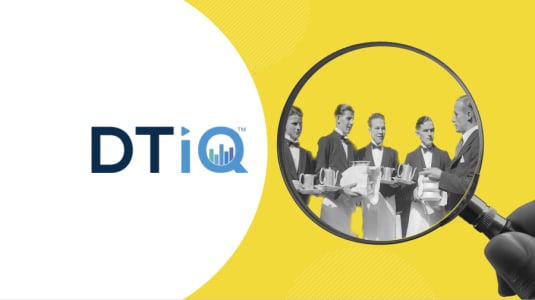Upstream Kanban: Streamlining Product Development Complexity
Too many stakeholders, too many requirements, and a lack of clear direction in which the product should be developed. If this sounds familiar to you, I have good news. There’s a process that can handle all these factors, help you organize your backlog, and take into account the expectations of stakeholders and users simultaneously. It’s called Upstream Kanban (or Discovery Kanban), and it’s here to put your product development process back on track. Read on to learn what it is and see a real case scenario where our team successfully used this method to improve our client’s processes.

Table of contents
What is the Upstream Kanban?
Upstream Kanban, also known as Discovery Kanban, is a method that focuses on the research phase where ideas and requirements are gathered, refined, and validated before any actual development work begins. This approach helps teams turn raw concepts into clear, actionable tasks. It helps to define the ideas, hypotheses, and assumptions (so-called “upstream”) and transform them into backlog items (the “downstream”). It helps transform opportunities from the upstream into downstream commitments, ready to be delivered by the development team.
In other words, by using Upstream Kanban, teams can visualize the flow of ideas, prioritize the most promising ones, and ensure that they are tested (and are usually already validated to some extent) and well-defined before they move into the development phase. It helps manage multiple sources of input, align the expectations of various stakeholders, and maintain a steady stream of ready-to-develop tasks.
Essentially, Upstream Kanban is all about making the product discovery process structured and transparent, ensuring that development teams work on the most valuable and well-prepared tasks.
Upstream vs. Downstream: Bridging the Gap
To understand Upstream Kanban, it’s good to know the difference between upstream and downstream processes in product development. Upstream processes are about discovering, refining, and validating ideas and requirements. This is where unclear concepts become clear, prioritized tasks. Downstream processes are where these tasks are carried out, leading to the actual development and delivery of the product by the development team. Managing both upstream and downstream processes ensures a smooth transition from ideas to implementation.
When to Use Upstream Kanban?
For stakeholders of a digital product (any type of software), Upstream Kanban can be very helpful in several situations. If there are many sources of requirements and options for product development, and teams have trouble sorting and prioritizing ideas, Upstream Kanban can bring much-needed clarity and organization. It is especially useful when development teams deal with vaguely defined ideas, which can lead to inefficiencies and wasted effort. Additionally, it helps manage the flood of requirements and feedback, making sure the right tasks are being worked on at the right time.
The Benefits of Upstream Kanban
Implementing Upstream Kanban offers many advantages:
- Visualizes the discovery phase: Makes the whole process clear and manageable.Tracks all sources of ideas: Ensures nothing is overlooked.
- Focuses on the most promising ideas: Helps prioritize tasks that provide the most value.
- Ensures a steady flow of options: Keeps the development pipeline filled with well-defined tasks.
- Maintains a clean backlog: Helps manage and organize tasks effectively.
- Improves communication with stakeholders: Enhances visibility and understanding across the organization.
- Engages the entire organization: Encourages collaboration and alignment towards common goals.
- Makes the product discovery process clear: Provides a framework for making informed decisions.
With these theories in mind, how can you turn them into something tangible? Let me share a real-life case from one of our clients who benefited from Upstream Kanban.
A Practical Case Study: DTiQ and Upstream Kanban
Client’s Background
DTiQ is a large American organization that provides video surveillance services for quick-service restaurants. Their clients include well-known brands such as Burger King, McDonald’s, and Dunkin’ Donuts. Despite their success, DTiQ faced challenges with their outdated legacy systems, which struggled to keep up with the company’s growth. Additionally, the stakeholder landscape was complex, involving multiple teams and users across various locations.
The Challenge
DTiQ needed to create a new product to better serve their growing number of customers. The goal was to make a product that could handle more demand while still providing high-quality service. The client was willing to use a structured approach, so we suggested using Upstream Kanban to manage the early stages of the development process.
Our Approach
We put together a special Discovery Team just for DTiQ’s needs. This team included the client’s product owner, Boldare’s product strategist, and a new role called the Product Discovery Lead, also from Boldare, who was in charge of running the product discovery process.
Phase 1: Product Discovery Workshop
We began the process quite classically - with a Product Discovery Workshop to set the foundations that are needed during the next phase. This workshop involved:
- Gathering needs and expectations from stakeholders
- Conducting interviews with product stakeholders, C-level business leaders, and user groups
- Summarizing insights into key findings
- Defining product and business goals
- Mapping out system and user-related activities
Phase 2: Continuous Discovery activities
Then, we engaged in continuous discovery activities:
- Iterating on the upstream flow, represented by a Kanban board with columns indicating task statuses.
- Visualizing the discovery process to provide transparency for the downstream delivery team.
- Integrating tasks into the sprint backlog to ensure seamless workflow
Outcomes and benefits.
From the client’s perspective, the main advantage of using Upstream Kanban was its ability to systematically organize the discovery process. This approach offers several benefits:
- It clearly outlines what needs to be built next and why, preventing the development team from wasting time.
- It reduces the risk of creating unnecessary features, saving the client money.
- It improves visibility of ongoing work for the team and client stakeholders, enhancing communication and transparency.
- It maintains a single backlog that narrows as tasks move toward delivery.
- It keeps stakeholders engaged by maintaining regular touchpoints to gather expectations, define goals, and validate solutions.
Upstream Kanban for DTiQ
The implementation of Upstream Kanban at DTiQ made their product development process much smoother. By organizing the initial phase of discovering ideas and keeping communication clear, we ensured that the development team focused on well-defined and valuable tasks, delivering only valuable increments. This approach not only met the client’s needs but also made the best use of their resources, leading to a successful product launch.
Conclusion
Upstream Kanban is a helpful method that organizes and clarifies the early stages of product development. It makes sure that only the most valuable and well-defined tasks go to the development team, resulting in efficient and successful products. From our work with clients like DTiQ, we’ve seen how effective this approach can be. It’s a valuable tool for any organization looking to improve their product discovery and delivery processes.
Share this article:








